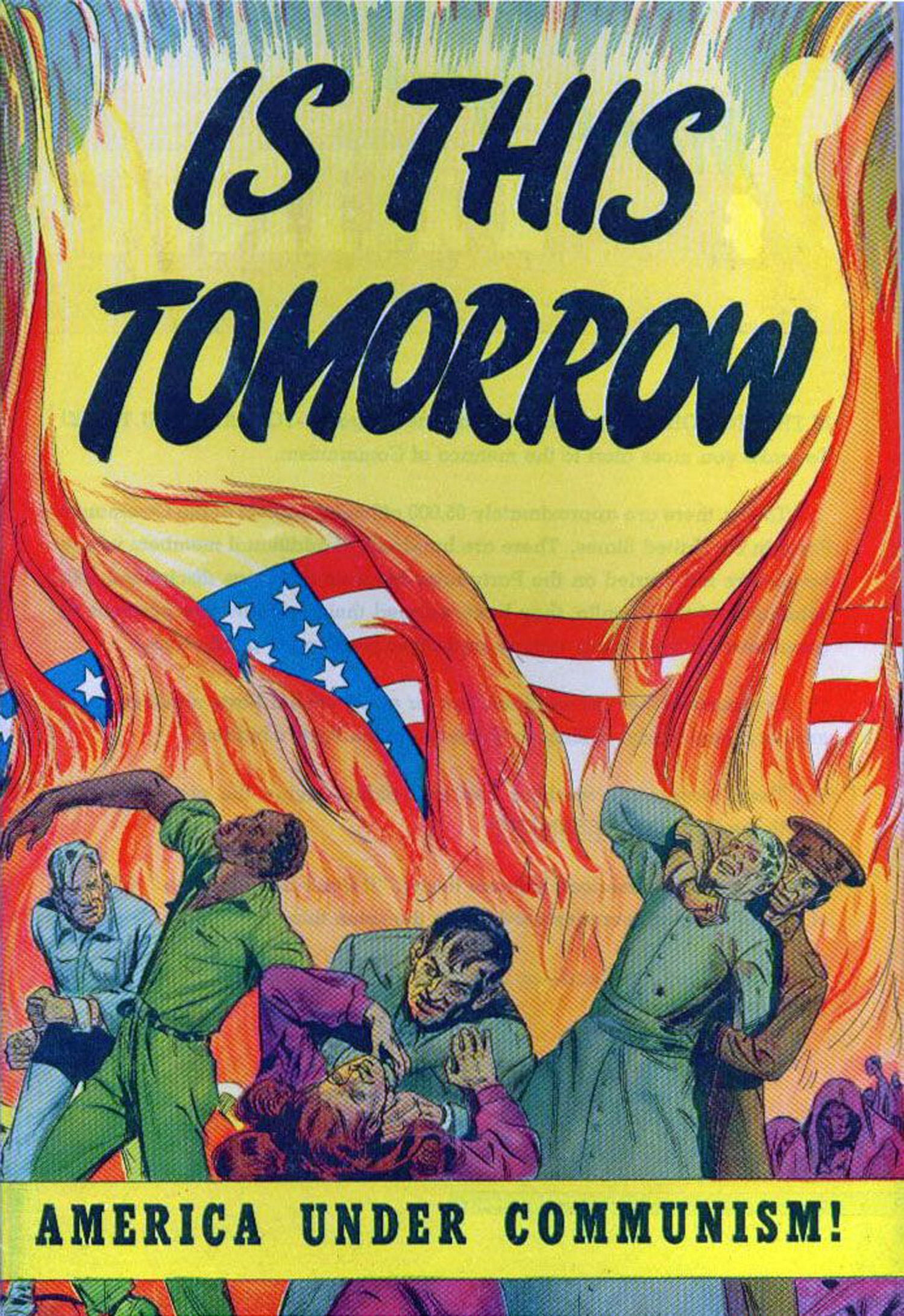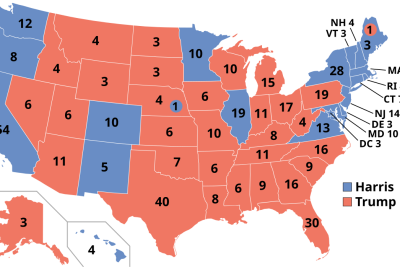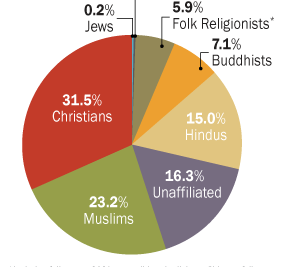
McCarthyites: Roots and Rise of American Anti-Communism

The McCarthyites were a group that emerged in the mid-20th century in the United States, characterized by their strong stance against communism during the height of the Cold War. This term specifically denotes individuals or groups associated with Senator Joseph McCarthy's aggressive tactics aimed at uncovering and rooting out communists within American society, government, and various institutions. The fear of communism, fueled by events both domestically and internationally, would set the stage for a significant chapter in American history that fundamentally shaped the political landscape of the era.
In the context of the broader narrative of American anti-communism, the McCarthyites symbolize a particularly intense manifestation of suspicion and fear that spread throughout the country in the 1950s. The roots of this movement can be traced back to the early 20th century, but it truly ignited in the aftermath of World War II. With the Soviet Union's emergence as a superpower, alongside the establishment of a Communist regime in China, paranoia about the potential infiltration of communism within the United States intensified. This article aims to explore the historical context of American anti-communism, examining the fears that led to the rise of the McCarthyites and the profound implications of their actions.
- Historical Context of American Anti-Communism
- The Early 20th Century: Seeds of Suspicion
- The Post-World War II Landscape
- The Rise of the Soviet Union and Its Impact
- China’s Shift to Communism: A Catalyst for Fear
- The Spread of Communism and U.S. Response
- The Fear of Communist Infiltration: Public Perception
- The Birth of McCarthyism: Who Was Joseph McCarthy?
- Key Events and Figures in the McCarthy Era
- The Role of Media in Shaping Anti-Communist Sentiment
- Consequences of McCarthyism on American Society
- The Decline of McCarthyism: Factors and Fallout
- Legacy of McCarthyism in Contemporary Politics
- Conclusion: Reflection on Anti-Communism in America
Historical Context of American Anti-Communism
The development of anti-communism in America has a rich and complex history. It is intertwined with various social, political, and economic factors of the time. In the early 20th century, the foundations of this movement were laid down as the fear of radical political ideologies began to surface following the Russian Revolution of 1917. This instigated a wave of concern regarding the potential for similar revolutions to occur in Western nations, particularly in the United States. The resulting Red Scare not only brought about the first incarnation of anti-communist sentiments but also set the precedent for future policies aimed at curtailing communism.
As the world transitioned into the post-World War II era, the ideological war between capitalism and communism intensified dramatically. The creation of the Iron Curtain, the division of Europe, and the formation of NATO further solidified the lines of conflict. These geopolitical shifts drove American society to bolster its defensive measures. As a result, the stage was set for the emergence of the McCarthyites, arising from well-established fears and gloomy predictions for the future.
The Early 20th Century: Seeds of Suspicion
The early years of the 20th century were marked by a growing distrust of communism, mainly stemming from the societal upheaval resulting from industrialization and immigration. As labor movements gained momentum, so too did the fears that radical groups were infiltrating these movements to overturn the established order. The event of the Palmer Raids in the 1920s was a significant turning point, as Attorney General A. Mitchell Palmer attempted to seize the momentum against suspected radicals, enacting a series of deportations and arrests. This period sowed the seeds of suspicion that would blossom into rampant anti-communist sentiment by the late 1940s.
Moreover, the terrorist bombings attributed to anarchists fueled public fear, which was gradually transitioning into a focus on communism as a growing concern. The first major political figure reflecting this anxiety was Senator John F. Kennedy, who characterized communism as a dire threat to the American way of life. Such sentiments would burgeon in the decades to follow, ultimately leading to the hyperbolic climate the McCarthyites would exploit in the 1950s.
The Post-World War II Landscape
After World War II, the political landscape in the United States entered a state of heightened tension. The victory over fascism had led to an underestimation of the danger posed by communism, as domestic political struggles began to take center stage. The Soviet Union emerged as a primary adversary, and its expansionist policies ignited fear within the hearts of the American populace. The creation of the Marshall Plan aimed to assist Western European nations in rebuilding their economies while preventing the spread of communism, further emphasizing the importance of identifying communist threats within the United States.
Add to this the ongoing struggle to contain communism worldwide, and the sentiment among Americans increasingly suggested that the enemy within could potentially destabilize the nation. The lack of understanding regarding communism, its ideology, and its supporters contributed to the prevailing fear of what were seen as infiltration and conspiratorial plotting by suspected communists. This climate nurtured the rise of the McCarthyites, who would utilize these fears to achieve their political goals.
The Rise of the Soviet Union and Its Impact
With the defeat of Nazi Germany, the Soviet Union transformed into a superpower and a symbol of communist strength. Stalin's dictatorship, characterized by widespread oppression and human rights abuses, made it clear that communism could be dangerous both at home and abroad. The Cold War became a backdrop for ideological battles, and the U.S. found itself at a crossroads: either yield to the perceived threat of communism or take a hardline stance against it.
As tensions escalated, organizations like the House Un-American Activities Committee (HUAC) were established to investigate suspected communists and sympathizers within the government and entertainment industry. Many Americans, fueled by the fear of Soviet influence on their lives, supported these initiatives, leading to a culture where suspicion often overshadowed evidence. The combination of historical context, public sentiment, and political maneuvering set the stage for the emergence of extremist measures enacted by the McCarthyites.
China’s Shift to Communism: A Catalyst for Fear
The victory of the Chinese Communist Party in 1949 was a critical turning point for American perceptions of communism, as it represented the establishment of a second, formidable communist regime alongside the Soviet Union. This shift prompted immediate fears that communism was spreading like a contagion, threatening not only the security of Asia but also the very fabric of American democracy. The loss of "China to the communists" reshaped the political discourse within the United States, prompting calls for a firmer stance against the communist ideology.
The implications of China’s shift to communism went beyond foreign policy; it fueled a heightened internal threat perception. Organizations and individuals who did not align with the dominant ideology began to face severe scrutiny. Fear became an instrument of control, and many Americans were persuaded that communism was a direct result of infiltration, espionage, and subversion. In this cauldron of fear and suspicion, the McCarthyites thrived, seeing their methods praised and their motives supported by a public increasingly willing to accept radical measures in the name of security.
The Spread of Communism and U.S. Response
The global spread of communism became a paramount concern for U.S. officials and policymakers. Various crises throughout the late 1940s and early 1950s, such as the Berlin Blockade and the Korean War, further enflamed fears regarding the trajectory of communism and its potential to destabilize democratic governments. The U.S. adopted a policy of containment, seeking to thwart communism's progress. This aggressive approach often created a perception of immediacy when it came to identifying and flagging potential threats within the nation.
The response to the spread of communism was characterized by a need to root out subversive influences within American institutions. Heightened vigilance inevitably led to a design where the intentions of artists, teachers, and a variety of professionals were continuously scrutinized. The McCarthyites frequently labeled anyone expressing dissenting views as unpatriotic or actively working for the communist cause, creating an environment where loyalty was often questioned.
The Fear of Communist Infiltration: Public Perception
The American public's perception of communism deteriorated drastically during this period of rising tensions. The portrayal of communists as malevolent forces that could undermine the nation permeated popular culture, leading to a widespread belief that there were communist sympathizers lurking in every corner. Propaganda films, books, and news articles played into these fears, often sensationalizing the threat of infiltration. The idea that every American citizen could potentially be connected to a nefarious network of communists took root in the psyche of the population.
This pervasive fear of communist infiltration became a tool for the McCarthyites, who took advantage of public anxiety to elevate their cause and gain widespread support. This created a culture of mutual suspicion, where friends and neighbors turned against one another out of fear that they might be harboring hidden agendas. The legacy of this sentiment is evident in countless accounts of families and communities torn apart by accusations of communism and unpatriotic behavior.
The Birth of McCarthyism: Who Was Joseph McCarthy?
At the epicenter of this intense wave of anti-communist sentiment was Senator Joseph McCarthy, a relatively unknown politician who would become synonymous with McCarthyism. McCarthy burst into the national spotlight with a speech in 1950 claiming to have a list of communists working within the U.S. State Department. This assertion, although unsubstantiated, sent shockwaves through the nation and placed the spotlight firmly on him as the leader of the anti-communist crusade.
Through aggressive tactics, McCarthy led the charge against alleged communists, utilizing fear-mongering to bolster his political career and garner public support. The methods employed by him and his followers were notorious for their disregard for due process, often leading to public trials and character assassinations without sufficient evidence. The rise of the McCarthyites can be attributed to their ability to manipulate fear and uncertainty, effectively creating an environment where anyone could become a target of suspicion.
Key Events and Figures in the McCarthy Era
The “McCarthy Era” was marked by a series of high-profile hearings, investigations, and accusations that stoked the flames of paranoia. One significant event was the Rosenberg trial, where Julius and Ethel Rosenberg were accused of espionage for allegedly passing nuclear secrets to the Soviet Union. The intense media coverage surrounding their trial created a heightened atmosphere of fear, and the execution of the couple in 1953 became emblematic of the extreme measures taken against suspected communists.
Another key figure against whom McCarthy directed his attacks was Army Counsel Joseph Welch, renowned for his eloquent defense and ability to confront McCarthy's aggressive tactics during the Army-McCarthy hearings. These moments, captured on live television, exposed the dramatic conflicts between fear-based accusations and the importance of due process, further eroding public confidence in McCarthy as his tactics were revealed to be baseless.
Along with the vamping of suspicion by the McCarthyites, the heart of the American political landscape began to shift, and public opinion increasingly rebelled against these extreme measures. The downfall of McCarthy and the increasing scrutiny over his tactics led to a reassessment of the actions taken during this turbulent period.
The Role of Media in Shaping Anti-Communist Sentiment
The media played a critical role in the formation of anti-communist sentiment during the period of McCarthyism. Newspapers and magazines became powerful tools in disseminating tales of espionage, subversion, and conspiracy. The portrayal of communists as enemies was not limited to serious publications; popular culture, including films and television programs, contributed significantly to the paranoia surrounding the communist threat.
As McCarthyites honed their messaging, journalists became complicit in amplifying the fear, often painting every dissenting voice or liberal ideology as potentially linked to communism. This not only fostered a culture of fear but also hindered meaningful discourse on crucial social issues. With editors shaping narratives according to prevailing sentiments, the media's actions contributed to a broader atmosphere of confusion, leading many to adopt paranoid views.
Consequences of McCarthyism on American Society
The consequences of McCarthyism were far-reaching and would shape American society for decades to come. The campaign against suspected communists resulted in numerous individuals losing their jobs, reputations, and even their freedom due to unfounded allegations. The chilling effect of the atmosphere bred wariness among colleagues, friends, and families, leading to censored conversations and self-censorship.
Many artists, intellectuals, and political activists found themselves blacklisted, with careers abruptly derailed by the shadow of suspicion cast upon them. Academic freedom was undermined as educators feared ramifications of exploring critical perspectives, further stifling innovation and discourse. The McCarthyites left behind a legacy of pain and ruin, as those labeled with the scarlet letter of "communist" found themselves ostracized from public life.
The Decline of McCarthyism: Factors and Fallout
As public skepticism grew in response to the extreme measures taken by McCarthy and his followers, a bipartisan backlash began to emerge. Notably, the Army-McCarthy hearings marked a significant turning point, showcasing the extent of his overreach and how far he had strayed from the principles of justice and fairness. His power waned following the televised hearings where he faced a formidable challenge from Army Counsel Joseph Welch, exposing his methods to national scrutiny.
The eventual censure of McCarthy by the Senate in 1954 signaled a turning point for the anti-communist crusade. The decline did not wipe out anti-communism entirely, but the methods employed by the McCarthyites fell out of favor. Instead, America began to resurface as a nation more willing to engage in thoughtful discourse, rather than coercive tactics.
Legacy of McCarthyism in Contemporary Politics
The legacy of McCarthyism remains pertinent in contemporary discourse, particularly in discussions about civil liberties and the balance between national security and individual rights. The tactics once celebrated by the McCarthyites serve as a cautionary tale about the dangers of mass hysteria and the ease with which paranoia can override justice. Investigations into subversive activities have since evolved, but the shadow of McCarthyism lingers as a reminder of what happens when fear takes precedence over rational discourse.
In the current political landscape, echoes of McCarthyism can be heard in debates over political correctness, whistleblowing, and government surveillance. Such discussions continually challenge society to find the balance between the protection of civil liberties and the need to safeguard the nation from genuine threats. The tumultuous history of McCarthyism forces a consideration of the consequences that arise when fear eclipses fundamental rights.
Conclusion: Reflection on Anti-Communism in America
In conclusion, the McCarthyites and their impact on American society demonstrate the potent dangers of unchecked fear and suspicion. The roots of American anti-communism can be traced back to key historical events that led to an environment ripe for radical politics and ideological strife. The consequences of this era, embodied in the actions of McCarthy and his followers, left indelible marks on the nation's consciousness.
Reflecting on this chapter in American history provides a window into the fragility of civil liberties during tumultuous times, challenging subsequent generations to remain vigilant against the same patterns of hysteria. As society continues to grapple with the intersection of security and liberty, the lessons learned from the anti-communist movement persist, serving as a pivotal reminder of the importance of grounded discourse and the protection of individual rights against the tides of fear.
Did you find this article helpful? McCarthyites: Roots and Rise of American Anti-Communism See more here Education.
Leave a Reply






Related posts